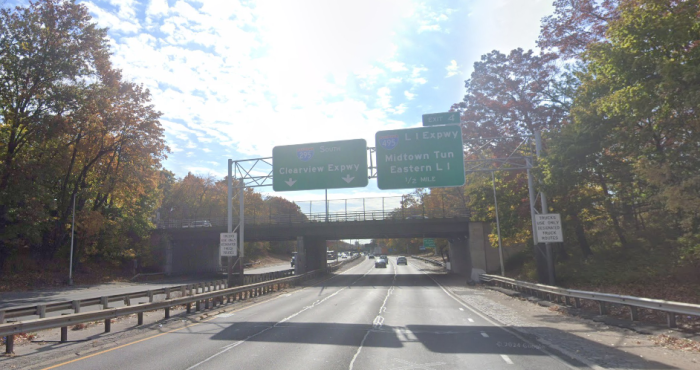It was a glorious sight to behold! Smiling brown faces painted in a kaleidoscope of colors–red, orange, purple, saffron, yellow and green. Hindu dharmacharyas arrayed in colorful kurtas and dhotis. The appetizing aroma of palowrie, mohan-bug and roti, wafting in the spring breeze. Multi-colored floats transporting entertainers and local elected officials through the streets of Richmond Hill. The pulsating rhythm of tassa drums resonating along the commercial strip in Atlantic Avenue. Hundreds of spectators lining the parade route from the starting point at Liberty Avenue and 133rd Street to the destination in Smokey Park on Atlantic Avenue.
However, the Pagwah Parade is more than a visual spectacle of fun frivolity and entertainment. It is a theological narrative of the triumph of good over evil — the triumph of the virtuous Prahlada over his evil aunt Holika — the triumph of Lord Vishnu over the demon-king Hiranyakashipu. It is an apocryphal tale of the courtship between two Hindu deities — Lord Krishna, the ninth avatar of Vishnu, and the beautiful Radha. Pagwah, like other Hindu festivals, such as Diwali, marks the astrological movement of the seasons – in this case, the transition from winter to spring.
In India, Pagwah is universally known as the festival of Holi. The word Holi originates from Holika, the sister of the demon king, Hiranyakashipu. Holika was informed by her brother that if she wore a magical shawl, she could not be destroyed by fire. One day, she tricked her nephew, Prahlada to sit on her lap in a giant bonfire. It was her intention to have him consumed by the fire. However, Lord Vishnu, the protector of Prahlada, was determined to protect his devotee from destruction. Vishnu blew a gust of wind in the direction of Holika. The windstorm ripped the shawl off the shoulders of Holika, and wrapped it around the body of her nephew Prahlada. Holika was consumed by the fire, and Prahlada emerged unscathed.
The Hindu narrative of Prahlada and Holika is reminiscent of the Christian story of the spiritual struggle between Jesus and Satan. The holi festival arrives a few weeks before the christian festival of Easter, when Jesus Christ, like Prahlada, emerged unscathed from the tomb, and triumphed over the forces of death and destruction.
There is a narrative to explain the tradition of smearing the bodies of Hindus with various pigments. In the Hindu scriptures, the Bhagavad-Gita, Lord Krishna is portrayed as a deity with “a beautiful blue-black completion.”However, Sri Krishna was apprehensive about the prospect of dating the fair skin deity. He explained the dilemma to his mother, Yasoda. With typical motherly wisdom, she urged her son to smear the body of Radha with different colors, so that no one will notice the disparity between their complexions. Krishna took his mother’s advice to heart and smeared the body of Radha and her gopis.
To the devotees of Hinduism, there is a secular explanation for the origin of the festival of Pagwah. It represents the transition of the Hindu lunar calendar from winter to Spring, Pagwah is celebrated during the last full moon of the Hindu calendar, during the month of Phalgun before the approach of the Vernal Equinox. It is celebrated in late February or early March. To the inhabitants of the Indian sub-continents, spring is a season that represents rebirth or renaissance. It is the season when the trees, the vegetation and the eco-system are restored to life and vitality after the death and decadence of winter. It is a time when the flowers bloom, the bird sing, and the eco systems resonate with new sounds, smells and rhythms.
The festival of Holi is known as “Pagwah” in the Indian diaspora – in places such as, Surinam, Guyana, Mauritius and Fiji. This is because many of the Indians living in the diaspora are the decendants of Indian indentured laborers who came from the province of Bihar on the subcontinent. The word, “Phaguwa,” is the equivalent of Holi in the Bhojpuri dialect in Bihar. Phaguwa is a national holiday in Guyana, and people of all races and religions participate in the celebration, which is held at the Hindu mandir in Prashad Nagar.
The Pagwah parade has been celebrated for twenty-six years in the town of Richmond Hill. It has experienced many vicissitudes of trials and tribulations. After the 9/11 explosion at the World Trade Center, there was an attempt by the Police, some elected officials, and community board members in Richmond Hill to either ban the parade or seriously restrict it. Law enforcement officials confused the turbans worn by the Sikhs in Richmond Hill to the turban worn by the Arabs terrorists of 9/11, and felt also that the powder that was sprinkled on celebrants at the Pagwah Parade could be a camouflage for the toxic chemical known as Anthrax. However, because of the vigilance of the Pandit’s council in Richmond Hill and the intervention of some elected officials, it was decided to keep the parade in Richmond Hill.
The Pagwah Parade provides an opportunity for the expanding, commercially dynamic Indo-Guyanese community in Richmond Hill to flex its economic muscles, and display to the world its cultural heritage. Pagwah is not only a celebration of Hindu culture, it is a celebration of Caribbean culture. It provides an opportunity for Guyanese, Trinidadians, Surinamese, Jamaicans and Grenadians, Christian, Muslims and Hindus, to come together in a spirit of brotherhood and participate in a festival of fun, frolic and frivolity. It is an opportunity for them to throw abir and powder on each other, and “play Pagwah.”
The Pagwah festival also provides an opportunity for Hindu devotees to demonstrate that Hinduism is not a narrow, ethnocentric cult focused on the worship of idols, but a global theology that deals with universal moral concepts of good and evil. It demonstrates that Hinduism is a secular theology that subscribes to the principle, that fun, frolic and frivolity is an intrinsic part of the human experience. It demonstrates that Hinduism is a religion with a sense of humor. That it deals with the concepts of the “sublime” and the “absurd” in interpersonal relationships. Finally, the Pagwah festival is a vehicle for human interaction, bringing together people of all religions, ethnicities and nationalities.
It is my hope that the Pagwah Parade in Richmond Hill will grow from strength to strength and expand geographically from Richmond Hill into the adjoining communities of South Ozone Park, South Jamaica, Rochdale and Hollis. It is possible that this parade can one day grow like the West Indian Labor Day Parade, and proclaim a welcoming message of brotherhood, joy and hope to people of all religious faiths, ethnicities and nationalities.
Colin A. Moore was formerly executive director of the National History and Culture Council in Guyana.
Email address: colin.moore@yahoo.com




















